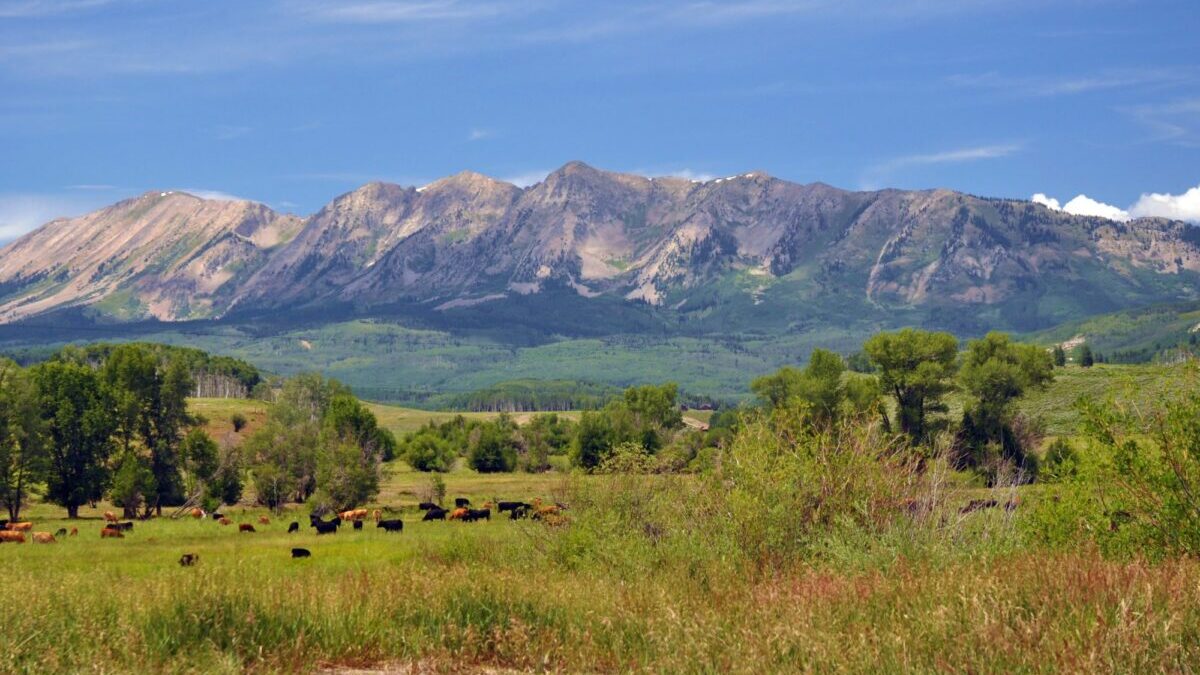The Bureau of Land Management (BLM) is preparing to fundamentally reshape how public lands are managed without congressional approval.
In March, the agency unveiled a sweeping proposal to establish a framework for “conservation leases” that places a newfound priority on preservation. The new Public Lands Rule presents a radical departure from the “multiple use mandate” Congress outlined for the agency in the Federal Land Policy and Management Act of 1976 (FLPMA).
New Rules Are a ‘Game Changer’
FLPMA requires federal lands to be used in ways that “best meet the present and future needs of the people.” The proposed rules from the federal bureau, which has 245 million acres under its jurisdiction, jeopardize access to public lands for grazing and development. Under the new framework for conservation leasing, parcels of federal property could be leased out by third-party NGOs that cut off any other uses for decades.
David McDonald, an attorney with the Mountain States Legal Foundation, called BLM’s new rules a “game changer” for how public lands are managed.
“Under this regulation, ‘conservation’ would be a ‘use’ just like mining or timber,” McDonald told The Federalist, adding that “the devil is in the details.”
While the BLM summary of the proposed rules repeatedly claims that conservation is merely being elevated to be “on par” with and not above activities such as grazing, mining, and logging, the text includes definitions that reveal ulterior motives. The rules outline new protections with vague terms such as “landscapes” and require officials to “prioritize protection of such landscapes” in leasing decisions. The text in the federal register also makes repeated references to analyzing “cumulative impacts” in decision-making, a phrase often embedded in climate regulation only to be weaponized by radical green NGOs to shut down projects the environmental lobby opposes.
“This is an attempt by the Biden administration to end multiple use on public lands,” William Perry Pendley, who led the BLM during the Trump administration, told The Federalist. “It’s all part of their 30 for 30 program.”
In 2021, President Joe Biden announced efforts to lock up 30 percent of American lands and waterways by 2030. The new BLM rule to introduce conservation leasing will likely become the administration’s primary vehicle for the initiative.
Other problematic areas of the proposal include vague references to prioritizing “ecosystem resilience” and the implementation of “indigenous knowledge” into analyses that can’t be tested.
“Consistent with applicable law and the management of the area, authorized officers would also be required to avoid authorizing any use of the public lands that permanently impairs ecosystem resilience,” the agency rules state. “Permanent impairment of ecosystem resilience would be difficult or impossible to avoid, for example, on lands on which the BLM has authorized intensive uses, including infrastructure and energy projects or mining, or where BLM has limited discretion to condition or deny the use.”
“This wording to me seems like it could be used to essentially ban any mining or ‘intensive use’ on any BLM land,” McDonald said. “There are a lot of different areas where they could be chipping away at people’s rights.”
“Whether or not it ends up being as bad as it looks could be a very open question,” McDonald added, depending “on how these provisions are integrated as a final rule.”
The Mountain States Legal Foundation, which has been at the forefront of western property issues since the 1970s, has just hired a new head of environmental resources who is looking into the BLM proposal.
Asked whether western ranchers should be concerned, McDonald said he “would be pretty worried.” More than 90 percent of the land owned by the federal government is out West. Although proposed guidelines offer protections for those with valid existing rights, ranchers might lose their chance to renew their claims thanks to competition from deep-pocketed environmental groups that can now claim priority.
“Ranchers should definitely be concerned enough to be paying attention,” McDonald said, adding the proposal has created “storm clouds on the horizon.”
Pendley was more fatalistic. “It’ll drive them out of business,” the former BLM director said. “We have ranches in the West that exist because they have a grazing allotment.”
“Livestock people settled the West, so when you take away the ability of a ranch to graze on an allotment associated with the ranch, then that’s the end of the ranch,” Pendley added. “They’re able to graze their livestock on BLM or Forest Service lands and it makes that ranch economical.”
The new rules appear to come straight from BLM Director Tracy Stone-Manning’s 1992 graduate thesis. While her 2021 nomination was controversial primarily over her history as an ecoterrorist, Biden’s BLM chief also condemned public grazing and promoted a Chinese-style child cap. Stone-Manning now oversees 155 million acres of grazing land, about the size of Arizona and New Mexico.
Grazing Is Good for Our Diet
BLM’s new rules thus threaten to take out ranchers, the original conservationists. A major blow to regenerative ranching, which incorporates animals as critical to the natural biological cycle, could actually be detrimental to the nation’s health.
In his book, “Food Fix: How to Save Our Health, Our Economy, Our Communities, and Our Planet — One Bite at a Time,” Dr. Mark Hyman writes about the important benefits of regenerative farm practices on both our health and our planet.
“Regenerative grass-fed meat can restore ecosystems, improving soils while sucking carbon from the atmosphere and increasing water storage in soils,” Hyman wrote, urging readers to “choose regeneratively raised animal products whenever possible.”
“They are better for you and better for the animals and help draw down carbon and reverse climate change,” Hyman added.
Even The New York Times has admitted grazing is an important tool to manage land. “A Different Kind of Land Management: Let the Cows Stomp,” said a headline from the paper two years ago.
Grass-fed cattle that graze on public land boost the supply of a healthier alternative, with two to six times more omega-3 fatty acids than factory-farmed meat, which is laced with antibiotics and pesticides. Omega-3 fatty acids enhance immune systems and prevent chronic disease.
BLM Ignores Red-State Needs
The BLM announced a tour of western states earlier this month to present its new rules on “Conservation and Landscape Health.” Of the five two-hour meetings revealed on the agency calendar, two are virtual, and three are held in urban centers: Denver, Reno, and Albuquerque. Not one is held in a state with a Republican senator or majority-GOP House delegation.
[READ: In Tour Promoting New Rule, Bureau Of Land Management Ignores GOP Mountain States It Would Hurt Most]
The four Republican members of the Idaho congressional delegation promptly sent a letter to the agency demanding senior leaders reassess their public hearing schedule.
“We were disappointed to see not only was Idaho not included, but the in-person locations are geographically concentrated away from many of BLM’s constituents,” lawmakers wrote.
The letter was followed by similar letters to BLM and the Department of the Interior by a coalition of 16 GOP senators representing western states, the Wyoming congressional delegation, and Republicans on the House Natural Resources Committee.
“The administration’s proposal will have considerable implications, fundamentally changing the way the BLM carries out its multiple use and sustained yield mandate under the Federal Land Policy and Management Act of 1976,” House lawmakers wrote Wednesday. Republicans demanded the BLM double its public comment period, which is scheduled to end in June. The letter included signatures from 14 lawmakers, including Colorado Rep. Lauren Boebert, whose district is home to the BLM’s headquarters on the western slope.
“Their objective is to end all economic use of public lands,” Pendley told The Federalist of the Biden BLM proposal. “Does that mean recreation? I don’t know. It depends on what kind of recreation. I don’t think they like ski resorts.”









